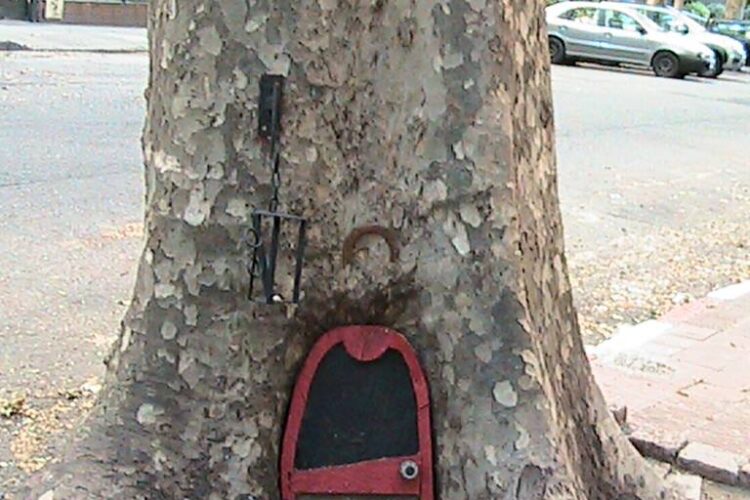Parece trabalenguas, sin embargo es un rompecabezas, ya hemos comentado que los lugares comunes no lo son tanto ya que la particularidad de la narración y la experiencia lo convierten en algo único, en este sentido, los tópicos son categorías que en su generalización esconden diferencias y distinciones que dan pie a nuevas categorías hasta comprender lo imposible de tan descabellada tarea. En un sutil contrasentido, algo similar ocurre con el no-lugar, término que se usa en antropología, acuñado por el francés Marc Augé, para definir el espacio de tránsito en el que no se vive, como el metro, el mall o el supermercado, sitios que se relacionan con el consumo por los que la humanidad transita sin realmente vivir en ellos.
En literatura, sin embargo, los no-lugares son las utopías y distopías que se refieren a realidades imaginadas, tanto idílicas, como terroríficas; en 1516 Thomas More, hijo de caballero inglés, pensador, teólogo, político, humanista, poeta, traductor, lord canciller de Enrique VIII, profesor de leyes, juez de negocios civiles, abogado, escritor y santo inglés inventó el término utopía para describir su mundo ideal, una isla con una organización perfecta, seguramente si hubiese conocido un poco sobre las costumbres de otros pueblos como el Aymara, el Mapuche o el Apache, habría comprendido que su construcción idílica sí tenía un lugar. Porque, cuán diferente es su reglada visión del no-lugar de la que se cultiva en Abya Yala y que Gabriel García Márquez describe tan bien: “Una nueva y arrasadora utopía de la vida, donde nadie pueda decidir por otros hasta la forma de morir, donde de veras sea cierto el amor y sea posible la felicidad, y donde las estirpes condenadas a cien años de soledad tengan por fin y para siempre una segunda oportunidad sobre la tierra.”
En cuanto a la distopía, es la representación de una sociedad futura y ficticia de características indeseables que conllevan a la alienación humana, realidades posibles pero ciertamente lejanas, sin embargo vemos como 1984 se ha convertido casi en un registro histórico de lo que fue ese tiempo, así como el Brave New World de Aldous Huxley (¿Por qué lo tradujeron como “Un Mundo Feliz”?) encarna en la política del hijo único que sacudió y diezmó la población del imperio chino hace no pocos años. Quizá no sea exagerado afirmar que América vive una realidad distópica desde la conquista, cuando pierde su lugar, su lengua, su conocimiento, su historia, sus creencias, que además, como todo el mundo, enfrenta los peligros de la ciencia y la tecnología, la desigualdad social, la dictadura corporativa y la guerra de baja intensidad de los estados traficas.
Existe también un no-lugar que más que referirse a un espacio se hace cargo de un giro temporal, la ucronía implica un cambio en la historia, un recurso característico de la ciencia ficción que se ejemplifica magistralmente en la obra de Phillip K. Dick, el Hombre en el Castillo, donde se presenta una realidad en la que los nazis ganan la segunda guerra, generando una historia divergente de la real. Podríamos decir que más que un no-lugar es un no-tiempo, lo que nos abre a otra serie de espacios e interpretaciones posibles, como el catacronismo que observa y narra una situación actual con ojos, usos y normativas del pasado, que juzga lo pasado con categorías del presente, hasta llegar al anacronismo de nuestra crónica de una extinción anunciada, el tópico utópico de esta distopía ucrónica que llamamos existencia y que relatamos y registramos día a día.
It seems like a tongue twister, however it is a puzzle, we have already commented that the common places are not so common since the particularity of the narration and the experience make it something unique, in this sense, the topics are categories that in their generalization hide differences and distinctions that give rise to new categories to understand the impossible of such a crazy task. In a subtle contradiction, something similar occurs with the non-place, a term used in anthropology, coined by the Frenchman Marc Augé, to define the transit space in which one does not live, such as the subway, the mall or the supermarket., sites that are related to consumption through which humanity travels without actually living in them.
In literature, however, non-places are utopias and dystopias that refer to imagined realities, both idyllic and terrifying; In 1516 Thomas More, son of an English gentleman, thinker, theologian, politician, humanist, poet, translator, Lord Chancellor of Henry VIII, professor of laws, judge of civil affairs, lawyer, writer and English saint invented the term utopia to describe his ideal world, an island with a perfect organization, surely if he had known a little about the customs of other peoples such as the Aymara, the Mapuche or the Apache, he would have understood that his idyllic construction did have a place. Because, how different is his regulated vision of the no-place from the one that is cultivated in Abya Yala and that Gabriel García Márquez describes so well: “A new and devastating utopia of life, where no one can decide for others even the way to die , where love is truly true and happiness is possible, and where lines condemned to a hundred years of solitude have finally and forever a second chance on earth. «
As for dystopia, it is the representation of a future and fictitious society with undesirable characteristics that lead to human alienation, possible but certainly distant realities, however we see how 1984 has almost become a historical record of what that time was. , as well as Aldous Huxley’s Brave New World (Why did they translate it as «Un Mundo Feliz»?) embodies in the one-child politics that shook and decimated the population of the Chinese empire a few years ago. Perhaps it is not an exaggeration to affirm that America has lived a dystopian reality since the conquest, when it loses its place, its language, its knowledge, its history, its beliefs, and also, like everyone else, faces the dangers of science and technology, social inequality, corporate dictatorship and the low intensity war of the trafficking states.
There is also a non-place that, rather than referring to a space, takes over a temporal turn, the uchrony implies a change in history, a characteristic resource of science fiction that is masterfully exemplified in the work of Phillip K. Dick, The Man in the Castle, where a reality is presented in which the Nazis win the second war, generating a story that is divergent from the real one. We could say that more than a non-place it is a non-time, which opens us to another series of possible spaces and interpretations, such as the catachronism that observes and narrates a current situation with eyes, uses and regulations of the past, which judges what past with categories of the present, up to the anachronism of our chronicle of an announced extinction, the utopian topic of this uchronic dystopia that we call existence and that we relate and record day by day.








